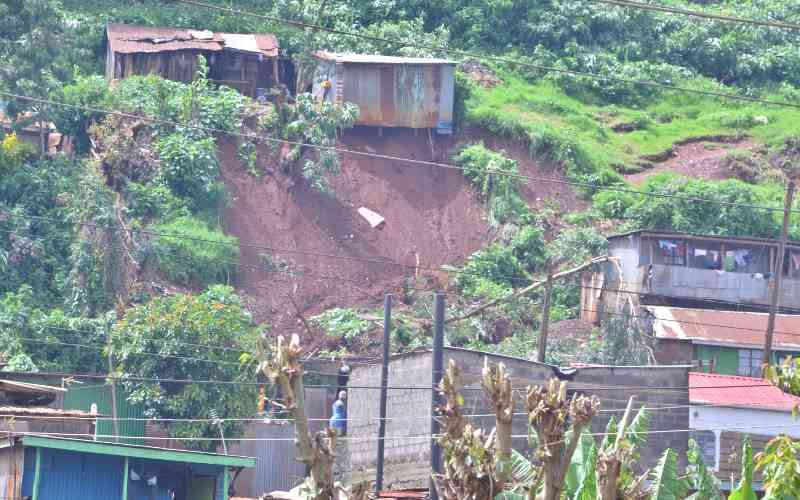By NICHOLAS WAITATHU
The country could enjoy high food stocks in the near future if measures announced last week to minimise food wastage along the value chain are implemented.
Even though agriculture contributes 25 per cent of the country’s gross income, Kenya is still food insecure.
Speaking at a function on the Agriculture, Livestock and Fisheries ministry’s progress in the last year, Cabinet Secretary Felix Koskei said a key Government priority is enhancing food production to feed the growing population.
“The Jubilee manifesto envisages investing in agricultural transformation and food security, including opening up at least one million acres of new land under irrigation to expand food supply, reduce food prices so as to bring down the cost of living, support agro-processing industries, spur export growth, and support other sectors such as manufacturing and tourism,” he said.
Top on the list of the measures to prevent food wastage is increasing food reserves. The country has one strategic reserve and it stores only maize.
Mr Koskei confirmed plans are underway to transform the Strategic Grain Reserves (SGR) into the Strategic Food Reserves (SFR) to include other grains, feed and livestock.
He said the SGR currently has three million 90-kilogramme bags of maize stored in National Cereals and Produce Board (NCPB) depots across the country.
National consumption
There were plans during former President Mwai Kibaki’s regime to enhance the SGR to eight million bags of maize, or 22 per cent of national consumption.
However, since 2010, these stock figures have not been achieved owing to low production of the crop. For example, in the current farming season, the country is expected to record a deficit of more than 10 million bags, a situation agriculturalists says will trigger a price increase for animal feed. It is feared that this will then lead to an increase in food prices.
But Koskei said the increase in stock levels of maize will soon be realised.
“The ministry has already purchased 1.09 million bags from farmers across the country as at March 27, 2014 at a cost of Sh3.056 billion, and the purchases are still going on.”
Under the programme to expand food reserves, other products such as milk, beans, wheat and potatoes will also be conserved.
Stay informed. Subscribe to our newsletter
Mr Alex Gathii of the National Dairy Traders Association praised the plan, saying the country needs milk reserves to carry it through periods of drought.
“A strategic milk reserve would also prevent losses when the country is experiencing a glut,” he said.
High-Value crops
Other initiatives being pursued to enhance food security include encouraging farmers to grow traditional high-value crops like sorghum, sweet potatoes, millet, cassava and green grams.
The Government also plans to hasten the enactment of the Warehouse Receipts System Bill 2014.
Under the proposed law, the Government will encourage farmers to store their produce in certified warehouses. They can then use what they have stored as collateral for short-term loans.
The East African Grain Council (EAGC), a regional commodity organisation, has also been encouraging farmers to adopt the warehouse receipts system to avoid post-harvest losses.
In a recent interview, EAGC Executive Director Gerald Masila confirmed that plans are on track to certify 10 more warehouses to create more spaces for farmers to store their produce.
And to ensure food wastage is prevented at the farm level, national and county governments are considering establishing fresh produce markets equipped with modern cooling facilities. Due to a lack of such facilities, the country is estimated to post harvest losses of fresh produce of Sh50 billion a year.
Other strategies include construction of a fertiliser factory, establishment of a Sh15 billion feed fund in the next five years, and setting up a Sh10 billion revolving fund to help farmers buy machinery.
[email protected]
 The Standard Group Plc is a
multi-media organization with investments in media platforms spanning newspaper
print operations, television, radio broadcasting, digital and online services. The
Standard Group is recognized as a leading multi-media house in Kenya with a key
influence in matters of national and international interest.
The Standard Group Plc is a
multi-media organization with investments in media platforms spanning newspaper
print operations, television, radio broadcasting, digital and online services. The
Standard Group is recognized as a leading multi-media house in Kenya with a key
influence in matters of national and international interest.
 The Standard Group Plc is a
multi-media organization with investments in media platforms spanning newspaper
print operations, television, radio broadcasting, digital and online services. The
Standard Group is recognized as a leading multi-media house in Kenya with a key
influence in matters of national and international interest.
The Standard Group Plc is a
multi-media organization with investments in media platforms spanning newspaper
print operations, television, radio broadcasting, digital and online services. The
Standard Group is recognized as a leading multi-media house in Kenya with a key
influence in matters of national and international interest.







